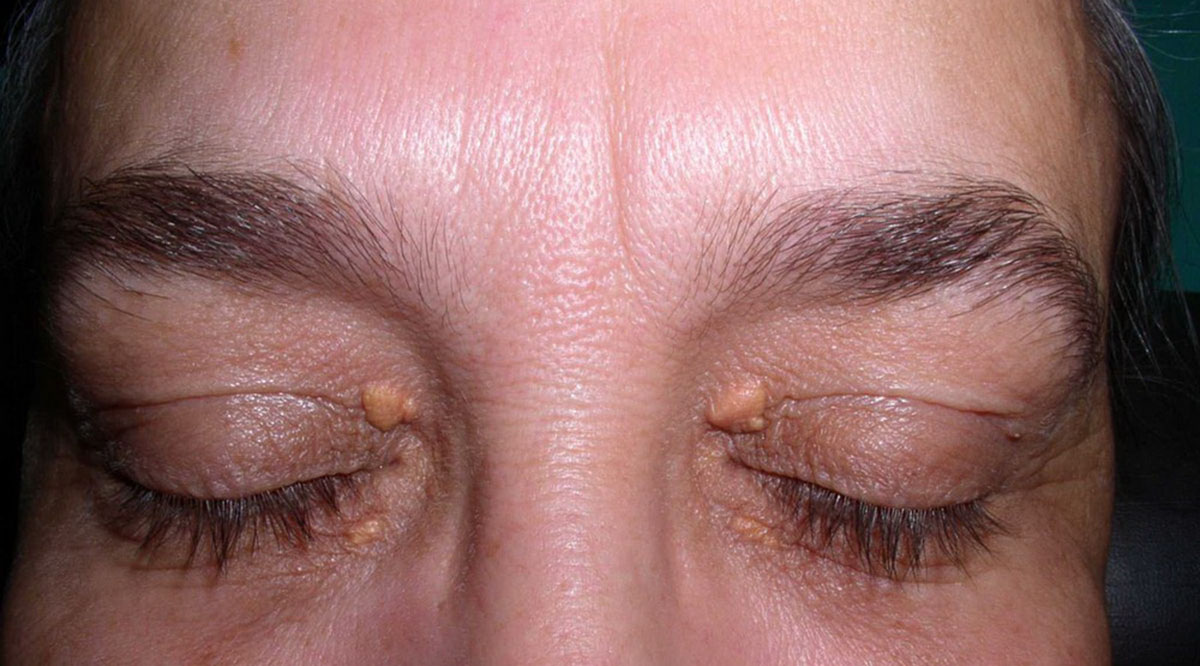Table of Contents
People often develop bumps and local skin thickenings (plaques) that come and go, such as acne or other local skin conditions. However, some new growths in the skin do not get well with hygiene or usual skin treatments. These may be related to other disorders, including cancer in other organs of the body besides the skin, such as the breast or the gastrointestinal tract.

Reddish to purplish plaques may be due to sarcoidosis, a disease that affects multiple organs of the body. Diabetes, chronic kidney disease, and other chronic disorders may be associated with the appearance of skin nodules and plaques.
Changes in Skin Texture
Softening or hardening of some parts of the skin may be another symptom of an underlying medical disorder. A common skin condition that results in dark, velvety skin over skin folds, especially at the back of the neck is known as acanthosis nigricans, and it is usually associated with obesity and diabetes. Itching and appearance of skin tags in affected areas, including the groin and axilla are also common in these conditions.
Hardening of the skin is also a feature of systemic sclerosis, an autoimmune disorder that may also result in hardening of tissues and other internal organs such as the heart and lungs. Chronic kidney disease, high blood pressure, and hormonal imbalance may also manifest as thickened, dry and itchy skin.
Loss of skin elasticity, resulting in very loose and doughy skin may be due to a rare connective tissue disorder, which may be a sign of multiple myeloma or lymphoma.
Nail Changes
The nails and hair are part of the skin system. Changes in the appearance of your nails may also indicate an underlying medical condition. For example, what looks like a fungal nail infection may actually be due to psoriasis, an autoimmune disorder that often affects the skin. It may also be accompanied by joint pains. Changes on the nail folds, showing ragged-looking, thickened cuticles separating from the nail may be due to dermatomyositis.
When to See a Doctor
Many changes in the skin, nails and hair are just dermatological problems that may improve with medical treatment and home remedies. Personal hygiene, good health habits, and avoidance of substances that are harmful to the skin may prevent or improve conditions such as acne, contact dermatitis, or skin infections. However, a few internal problems may manifest as skin changes, and these must not be ignored. Although local skin problems usually get better over a few days or weeks, or sometimes come and go, often improving with treatment, skin changes that are associated with medical problems are more persistent in nature.
See Also: Protect Your Skin - National Healthy Skin Month
Proper diagnosis is necessary for proper treatment, and it is best to evaluate your health problem as early as possible to avoid complications.
- MedlinePlus. Skin discoloration – bluish. http://www.nlm.nih.gov/medlineplus/ency/article/003215.htm
- EmedicineHealth. Jaundice. http://www.emedicinehealth.com/jaundice/article_em.htm
- AAD. Skin can show first signs of some internal diseases. http://www.aad.org/stories-and-news/news-releases/skin-can-show-first-signs-of-some-internal-diseases
- Cleveland Clinic. Dermatologic Signs of Systemic Disease. http://www.clevelandclinicmeded.com/medicalpubs/diseasemanagement/dermatology/dermatologic-signs-of-systemic-disease/
- DermNet NZ. Skin signs and systemic disease. http://www.dermnetnz.org/systemic/
- Mindmap by steadyhealth.com
- Photo courtesy of Klaus D. Peter by Wikimedia Commons : en.wikipedia.org/wiki/Xanthelasma#mediaviewer/File:Xanthelasma.jpg
- www.nlm.nih.gov
- www.emedicinehealth.com
- www.aad.org
- www.clevelandclinicmeded.com
- www.dermnetnz.org


Your thoughts on this